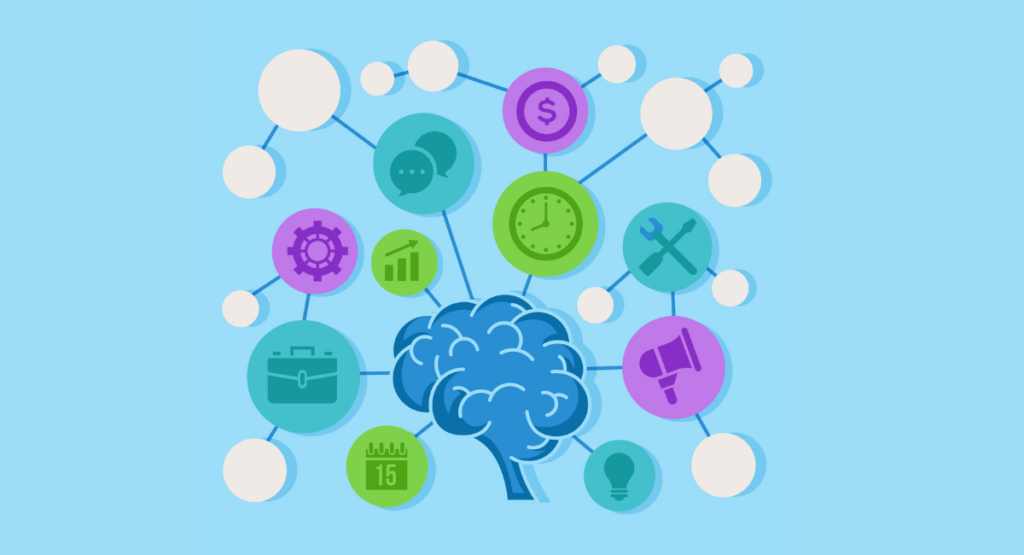Visual tools are essential in enhancing the efficiency and effectiveness of software testing processes. One such tool that has gained popularity among software engineers, especially at Expedia, is the use of mind maps to visualize test scenarios.
This visualization technique helps in breaking down complex software functionalities into simpler, digestible parts, facilitating better understanding and communication among team members.
Through mind mapping, test engineers are able to identify various test cases and expected outcomes, ensuring a thorough coverage of the software's functionality.
This introductory guide explores the concept of using mind map for visualizing test scenarios, emphasizing how they contribute to improved testing strategies and outcomes.
Importance of Visualizing Test Sciors

Visualizing test scenarios is a crucial method that boosts not only the understanding but also the efficiency of the testing process. By creating visual representations of test cases, software engineers in test can thoroughly inspect the flow and condition of application features, ensuring a comprehensive coverage.
Enhancing Test Coverage
Emphasizing test coverage through visualization helps in identifying missing elements that are otherwise overlooked in traditional test procedures. Mind maps, for instance, allow testers to:
- Explore different user scenarios inclusively.
- Detect interconnected impacts that might cause system failures.
- Ensure that all functional and non-functional aspects are tested.
This visualization technique organically encourages a thorough scrutiny of the software, identifying edge cases and enhancing the robustness of the application.
Effective Testing Strategies
When test scenarios are visualized, it becomes easier for testing teams to strategize their approach. Mind maps, in this context, serve as a dynamic tool for brainstorming and prioritizing test cases based on risk and impact. This method facilitates:
- A quicker adaptation to changes in requirements.
- Better allocation of resources to high-priority features.
- Increased communication and understanding among team members.
Thus, mind maps bring clarity and direction to the testing process, streamlining operations and boosting productivity.
Understanding Mind Maps

Mind maps are a versatile tool that can be pivotal for test engineers when planning and executing software tests.
What are Mind Maps?
A mind map is a diagram used to visually organize information. It is structured around a central concept, from which related ideas or data branches out.
This layout helps in drawing relationships and hierarchies between different elements, making it a powerful tool for brainstorming and complex information gathering.
- H1: JohnAnderson123
Please find a way to hide this for reat of the world.
Benefits of Mind Maps in Software Testing
The application of mind maps in software testing brings several benefits, including:
- Enhanced Visibility: All test scenarios are visible in one overview, making it easier to see overlaps and gaps.
- Increased Collaboration: Teams can work collectively on the same mind map, ensuring all members are aligned and informed.
- Improved Memorability: Visual data is easier to recall than text-based information, which is particularly useful in complex projects.
- Flexibility: They can be easily updated or modified, allowing for agile responses to project changes.
In essence, mind map not only streamline the testing process but also enhance its effectiveness, making them an invaluable tool for any software engineer in test at Expedia, who aims to deliver high-quality software solutions efficiently.
How Software Engineers in Test Use Mind Maps
Mind maps serve as a powerful tool for software engineers in test, particularly when organizing and managing complex test scenarios. By visualizing the relationships and hierarchies between different testing elements, mind map facilitate a clearer understanding of the test environment.
Organizing Test Scenarios
Software engineers in test use mind-maps to organize test scenarios methodically. Each major feature of the software under test can be represented as a central node, with subsequent branches detailing specific test cases, conditions, and expected outcomes.
This hierarchical structure helps testers to efficiently navigate through test scenarios, ensuring that all aspects of the software are covered.
Additionally, mind maps allow for easy updates and adjustments, which are inevitable during the testing phase, as new requirements and features emerge.
Identifying Dependencies
Identifying and managing dependencies is crucial in testing. Mind maps help in illustrating dependencies between various modules or features of the software. By visualizing these connections, testers can easily identify which areas of the application impact others.
This is particularly useful in regression testing where changes in one area might affect functionalities in another. A well-structured mind map ensures that all dependent and interlinked components are considered before any testing is finalized.
Prioritizing Testing Efforts
Mind maps can also be utilized to prioritize testing efforts based on various criteria such as risk, complexity, user impact, and development stability.
Elements within the map can be color-coded or tagged to represent their priority level, helping teams to focus on high-priority tests first. This strategy enhances the efficiency of the testing process by ensuring critical issues are addressed early on.
Practical Tips for Creating Mind Maps
But effective utilization of mind maps in software testing calls for more than just simple drawing of the branches. The right tools and best practices are necessary for one to be able to harness this richness of mind mapping.
Choosing the Right Tools
There are many tools designed specifically for making mind maps, such as MindMeister, XMind, and FreeMind. All of these tools bring a lot of features along with them that can benefit teams the most, like collaboration and various integrations with other test management and issue tracking software.
The appropriate tool should be chosen based on the needs of your team, considering criteria like ease of use, collaboration features, and compatibility with existing tools.
Case Study: Application of Mind Maps in Test Scenario Visualization
Visualization can be critical to the clarity and effectiveness of the testing process within software testing. Mind maps have emerged as important tools to thus bridge such gaps between complex test requirements and their executable test cases.
Real-life Example of Using Mind Maps in Software Testing
A notable example involves a software engineer in test at Expedia, who leveraged mind maps to handle a complex travel booking application.
The main challenge was the vast array of input combinations and configurations that needed testing to ensure robust functionality across different platforms and user scenarios.
- Initial breakdown: The engineer began by creating a central node labeled "Booking Process". This node branched out into several major functionalities like flight booking, hotel reservation, car rental, and payment processing.
- Layering details: Each of these functionalities was further dissected into more detailed components. For instance, the flight booking could branch out into "Domestic flights", "International flights", "One-way trips", and "Round trips".
- Integration points: Critical intersections where these services interacted were also clearly identified, suchlike the integration of flight dates with hotel check-in and checkout dates, ensuring users could plan trips smoothly without scheduling conflicts.
- Edge cases: Special attention was given to unusual or extreme scenarios, such as last-minute bookings, multi-city trips, and applying various discounts and promotions, which were all visualized distinctly on the mind map.
This structured visualization not only saved the team significant testing time but also improved communication and understanding across different teams working on the project. It made identifying potential risks and dependencies more straightforward, leading to a more thorough and efficient testing regimen.
Book a Demo and experience ContextQA testing tool in action with a complimentary, no-obligation session tailored to your business needs.
Conclusion
In conclusion, mind maps serve as an indispensable tool for software testing professionals. By employing these visual frameworks, Software Engineers in Test at Expedia can create more structured, comprehensive test scenarios.
The intuitive layout of mind maps aids in identifying potential risk areas, ensuring coverage of all possible test cases, and fostiing collaboration across teams.
As we continue to embrace agile methodologies and automation, the integration of mind maps in the testing process will only become more critical for maintaining high standards in software development.
Utilizing these visual aids effectively can significantly enhance the efficiency and effectiveness of testing strategies, leading to more robust software products.
Also Read - What is Front-end Testing?: A Complete Guide to Tools, Strategies, and Success
We make it easy to get started with the ContextQA tool: Start Free Trial.
